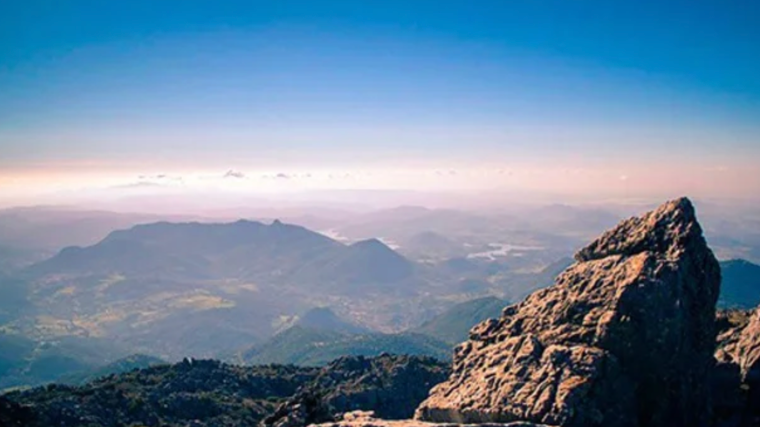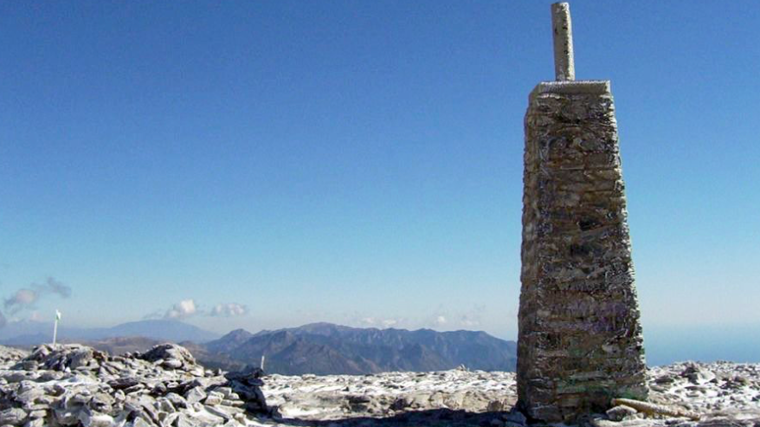Easy hiking trails along Andalusia's highest peaks: where they are and how high they are

Andalusia offers a geography of contrasts where it is possible to climb emblematic peaks without having to be a mountaineer . The region has five provincial peaks that, with good physical fitness, a good weather forecast and suitable equipment , can be reached via simple and easily recognizable routes: La Maroma (2,069 m) in Málaga, El Torreón (1,654 m) in Cádiz, La Tiñosa (1,570 m) in Córdoba, El Terril (1,129 m) in Seville and Bonales (1,055 m) in Huelva. This is a practical guide, with a focus on safety and respect for the environment, about where they are, where they are most comfortable to climb and what to expect from each route.
The Andalusian Mountaineering Federation (FAM) insists on advance planning as the basis for a safe outing, and emphasizes that setting out in the morning is part of this good preparation. Starting early allows you to avoid the hottest hours, crucial in summer, take advantage of daylight for almost the entire activity, and have a buffer in case the route is extended due to unforeseen events or a slower pace; you should never start with just enough time.
The FAM recommends choosing an approved and signposted route appropriate to your physical condition and experience: SL (white and green), PR (yellow and white), or GR (red and white). Lists of trails can be found on the FAM website and those of its provincial federations. Before setting out, it's a good idea to check not only whether it will be sunny or rainy, but also the maximum and minimum temperatures and the wind forecast , because the weather in Andalusia can change rapidly in mountainous areas. As a basic safety measure, it's advisable to inform a trusted person of the route you'll be taking, where it will pass, and your approximate return time.
 The top of El Torreón in Cádiz
ABC
The top of El Torreón in Cádiz
ABC
As for gear, the FAM summarizes the basic equipment in the " 10 essential backpack " for a one-day hike. Footwear should be specific for hiking, sneakers or boots with a tacky sole and good grip, and should never be worn for the first time on a long hike. Clothing should be technical: breathable synthetic fibers or merino wool, avoiding cotton because it soaks through and dries slowly. Layering (a T-shirt, fleece, jacket) is preferable to a single, very thick layer. A raincoat or windbreaker is essential even when rain is not expected, and depending on the season, a sun hat or warm hat should be added; high-factor sunscreen and sunglasses are mandatory in Andalusia.
When it comes to nutrition and hydration, water is the most important factor: you should bring more than you think you need, with a general recommendation of at least 1.5-2 liters per person for a half-day hike, and more in summer or on long routes, without relying on sources along the way. For quick energy boosts, fresh fruit, nuts, bars, or a snack work.
 Summit of La Maroma, where hikers take photos after the climb
Andalusian Government
Summit of La Maroma, where hikers take photos after the climb
Andalusian Government
In terms of technical and safety, a 20-30 liter backpack is usually enough for the day; a map and compass, and knowing how to use them, prevent you from relying solely on your cell phone or GPS; your phone should be charged and accompanied by a backup power bank; a basic first-aid kit with blister packs, band-aids, antiseptic, bandages, and personal medication is a must; and a headlamp or flashlight can prevent problems if night falls. A whistle is an effective ally for calling for help with less effort than shouting.
Regarding the importance of not trivializing these climbs, Carlos Guerrero, a member of the Andalusian Mountaineering Federation, warned: "Climbing one of these peaks is no joke , and you can have a very bad time if you don't do things with caution and are well equipped."
La Maroma , Málaga's highest peak at 2,069 meters, rises in the Sierra de Tejeda, within the Sierras de Tejeda, Almijara y Alhama Natural Park. For a first taste, the most challenging climb starts in Canillas de Aceituno and progresses along a clear path to Collado de la Mujer before tackling the final ridge, which is rocky but not particularly technical. It's a full-mountain route: sustained elevation gain , limestone terrain, and wind exposure. The key is to get up early, check for gusts at altitude, and plan to have enough water because shade is scarce and there are no reliable sources. On clear days, the views extend to the Sierra Nevada and, to the south, the Málaga coast, a reward that makes the effort worthwhile.
At 1,654 meters, El Torreón crowns the Sierra del Pinar mountain range in the Sierra de Grazalema Natural Park and is the highest peak in Cádiz. The usual access is from the marked trail next to the A-372 between El Bosque and Grazalema. The route is the shortest of the major Andalusian peaks, although its continuous gradient requires taking it slowly. It does not include any aerial sections or climbs, but it does require prior permission from the park due to conservation quotas, a procedure that should be arranged in advance. In summer, the heat and restrictions due to fire risk make the ascent inadvisable; autumn and spring, with clear skies and moderate temperatures, are the best seasons. At the summit, the Spanish fir forest opens up to the north and offers a panoramic view that alone explains the protection of the site.
 Hikers rest in a cave in La Tiñosa before reaching the summit.
Andalusian Government
Hikers rest in a cave in La Tiñosa before reaching the summit.
Andalusian Government
La Tiñosa , 1,570 meters high, is located in the Subbética region of Córdoba, in the Sierra de la Horconera. The most accessible approach starts in the village of Las Lagunillas (area of Priego de Córdoba ) and links tracks and paths to Collado de la Madera to face the final slope. The route is clean and clear; the final section, of loose rock, requires sturdy soles and walking sticks to relieve the strain on your knees. The reward is a panoramic view of endless olive groves dotted with limestone, a landscape that epitomizes the region's identity. On windy days, a light windbreaker makes all the difference on the summit ridge.
El Terril , 1,129 meters high, the highest peak in Seville, rises between Algámitas and Pruna, in the Sierra Sur. Its ascent is the most gentle of the five, ideal for families with a keen hiker. The classic route begins near the Algámitas recreational area and climbs steadily to the geodetic vertex. The climb combines grassy hills and a wide ridge where the wind can blow strongly . Autumn and winter offer clear air and perfect temperatures, with views that encompass the mountains of Cádiz and, on clear days, the Malaga mountains. It is a welcome peak for beginners in the idea of "building the roof" of a province.
Bonales , at 1,055 metres, is the highest point in the province of Huelva in the Sierra de Aracena and Picos de Aroche mountains, very close to the border with Badajoz. It is reached via paths and trails through the meadowland that start in towns such as Santa Ana la Real and Arroyomolinos de León, on a route with a gentle gradient, no technical steps and sufficient signage in key sections. It is a landscape of holm oaks , rockroses and beehives that demands scrupulous respect for gates and livestock . The summit, identified by its geodetic vertex, can be enjoyed at any time of year, although spring, with its green pastures and high skies, shows it at its best.
Each park has its own rules . In the case of El Torreón, limited permits and spaces require planning your trip; at La Maroma, the lack of shade and water points penalizes late starters, especially in summer; in the Subbética region of Córdoba, the scree of La Tiñosa requires caution on the descent; at Terril, gusts can surprise you on the ridge, and it's advisable to bundle up even on mild days; at Bonales, coexistence with agricultural and livestock activities requires always closing gates and keeping pets at bay. These are simple routines that prevent incidents and preserve the environment .
The added attraction of these peaks is both cultural and gastronomic . Canillas de Aceituno opens the door to the flavors of the Axarquía region after La Maroma; Grazalema and El Bosque turn a day at the Torreón into a complete excursion filled with mountain cheeses and wines ; Priego de Córdoba and its surroundings allow you to pair La Tiñosa with first-press olive oil ; Algámitas and Pruna offer the mountainous counterpoint to the Sevillian countryside; Santa Ana la Real and the neighboring towns in Huelva round off Bonales with Iberian dehesa meats . Reaching them also means reading the territory: understanding how these mountains are inhabited and cared for.
For those who want to "collect them," a reasonable schedule combines autumn and spring for the most exposed peaks, La Maroma and El Torreón, leaving winter for El Terril and opening any season for Bonales, with La Tiñosa as a versatile option depending on the wind and temperature. With a sensible route map, the series can be completed safely and without rushing . Andalusia offers summits within reach of many; the difference between an excellent experience and a bad memory often lies in the departure time , the water you carry, and compliance with the rules. Five peaks that reward the effort with five landscapes that reflect Andalusia's natural diversity.
ABC.es




